Thinking of visiting the the Holy Stairs and Sancta Sanctorum in Rome? They are one of the world’s most important pilgrimage sites.
Many people come to Rome to walk in the footsteps of legendary people from history, like walking down the Via Sacra to commune with Julius Caesar. But at this site, Christian pilgrims come to climb a staircase and see the pope’s former private chapel.
What’s so special about the stairs?
Roman Catholic tradition holds that these are the 28 white marble stairs that Jesus climbed on his way to face trial before Pontius Pilate. They’re reputed to be stained with drops of Jesus’ blood.
History Of The Holy Stairs
The story behind the Holy Stairs is a compelling one and it starts with Emperor Constantine.
Constantine came to power in 306 A.D. and was an ambitious and energetic ruler. But he didn’t want to share power with his western cohort, Maxentius. He wanted to rule all of Rome and its far flung empire.
In 312, their two armies were ready to do battle. On the night before the fateful day, Constantine had a vision, which has been depicted by artists in the Vatican Museums and in the Piero della Francesca fresco cycle of The Legend of the True Cross.
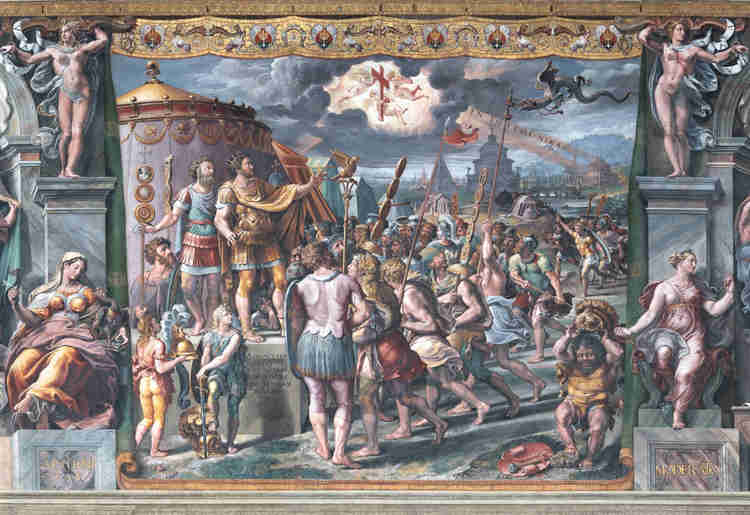
Constantine dreamed that he saw a cross in the sky and that God told him to paint Christ’s name on his soldiers’ shields. He complied.
READ: History of the Roman Emperors
The next day, Constantine routed Maxentius in the Battle of the Milvian Bridge, becoming sole emperor of both the east and west empire.
To Constantine, the Christian god was more powerful than the entire pantheon of pagan gods that Rome worshipped.
Constantine issued the edict of Milan, granting tolerance to Christians. Christianity was on its way to becoming the official religion of the Roman Empire.
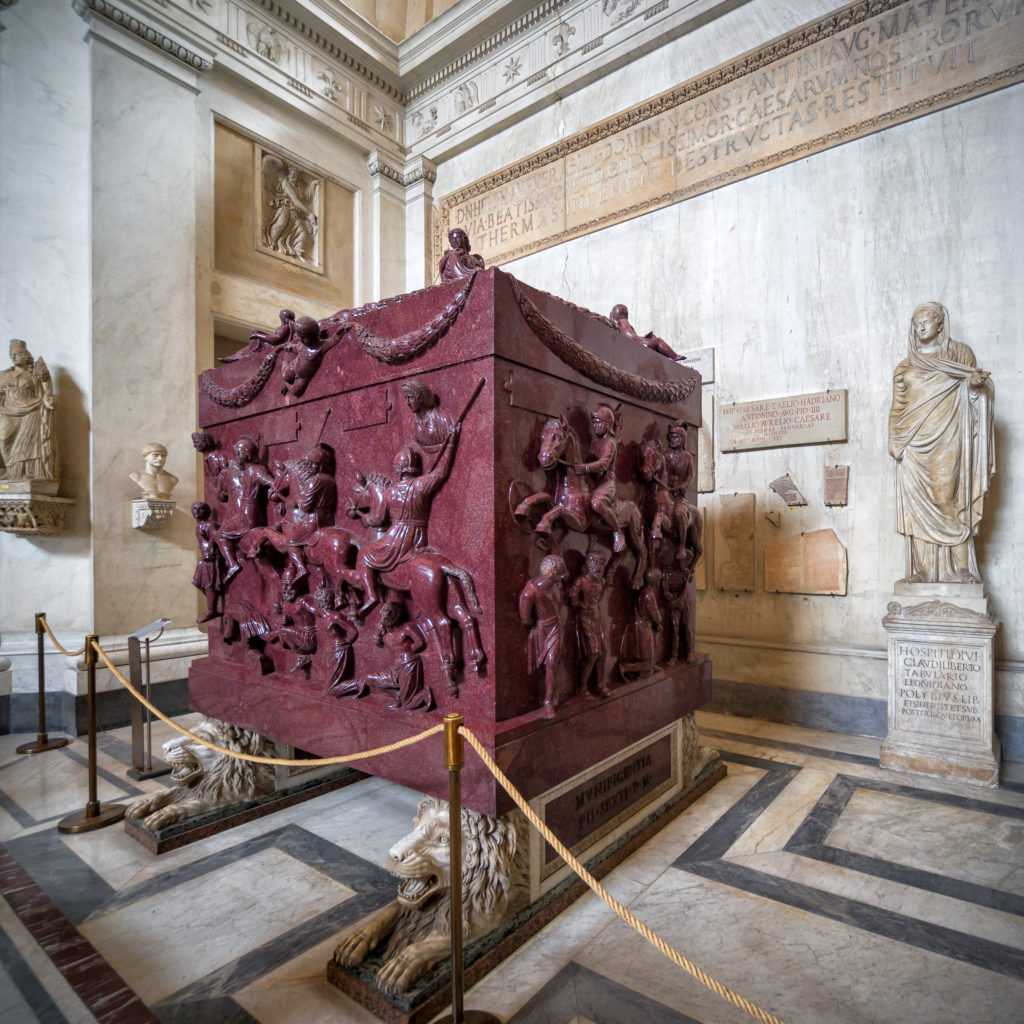
But even Constantine knew that Rome wasn’t the center of the empire anymore. After some scouting, he selected a new city to be the seat of Rome, the Byzantine capital of Constantinople. He tried to call it “New Rome, but that name didn’t stick.
Constantine also believed he needed to demonstrate a tangible connection to God. He wanted to demonstrate his divine favor and thereby ensure his status above other mortal men.
He turned to the person he most trusted, his mother Helena. She was dispatched to Jerusalem with an imperial retinue.
Her mission? To collect relics from the life and times of Jesus and bring them home.
Upon arriving, the 80 year old matriarch found a city still reeling from Titus’ attack in 70 A.D. But she got going to rectify the situation.
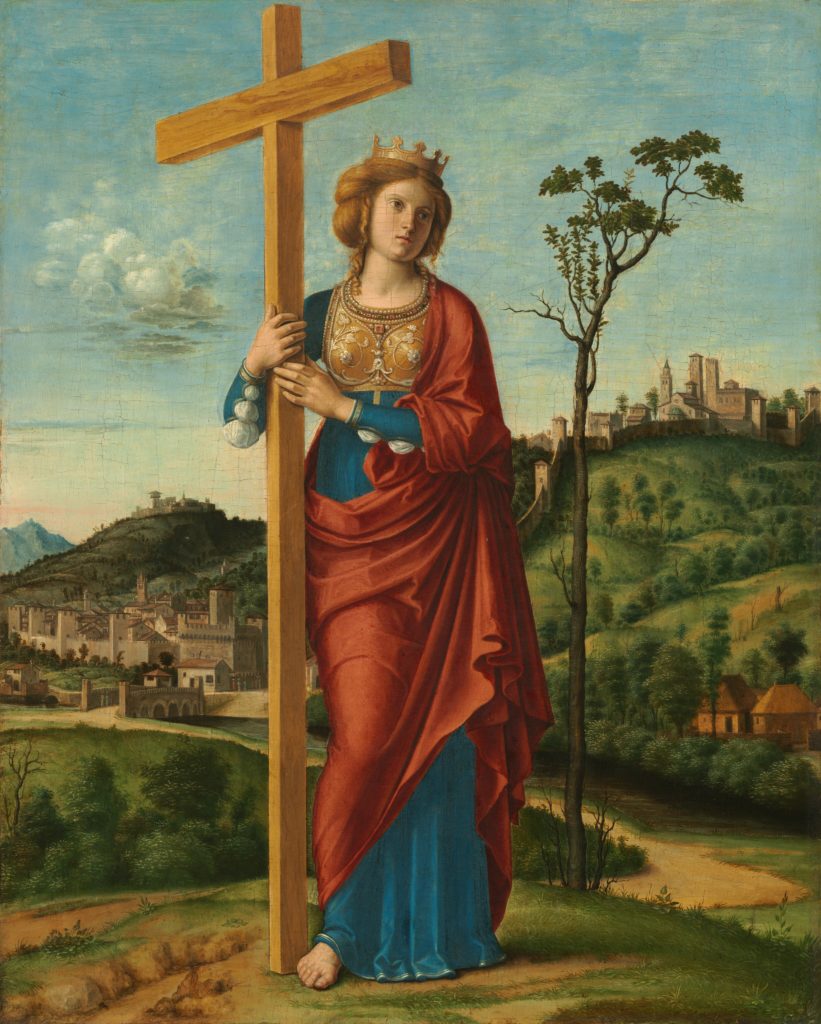
She commissioned the building of churches. She claimed to discover pieces of the true cross and thorns from the crown of thorns.
The most fascinating relic she uncovered was the staircase leading to the office of Pontius Pilate. He was the Roman governor who adjudicated the trial of Jesus.
It was on this staircase that Jesus walked up to receive his fateful judgment. Helena believed that, by walking on the stairs, people would feel like they were in direct contact with Jesus.
Helena crated up the staircase and brought it to Rome with her other treasures. Upon arriving there, she collapsed and died, perhaps from her exhausting task.
The Holy Stairs were initially installed in the papal palace. In the late 1580s, Pope Sixtus V opened the steps to the public. Pilgrims came in droves.
Over time, the palace fell into disrepair. When parts of it were knocked down for renovation, the Holy Stairs were re-discovered. In 1723, Pope Innocent XIII relocated them to the entrance of St. Lawrence in Palatio.
The staircase was encased in wood for protection because the steps could no longer tolerate the wear and tear from pilgrims’ visits. But there are slots in the wood where you can see the actual marble stairs.
The stairs reopened to the public in 2019 after a year long restoration. For 60 days, pilgrims could climb the actual stairs without any protective covering.
The Mannerist frescos on the walls and ceiling were also restored. Apart from removing dust and grime, restorers even found ancient graffiti on them.
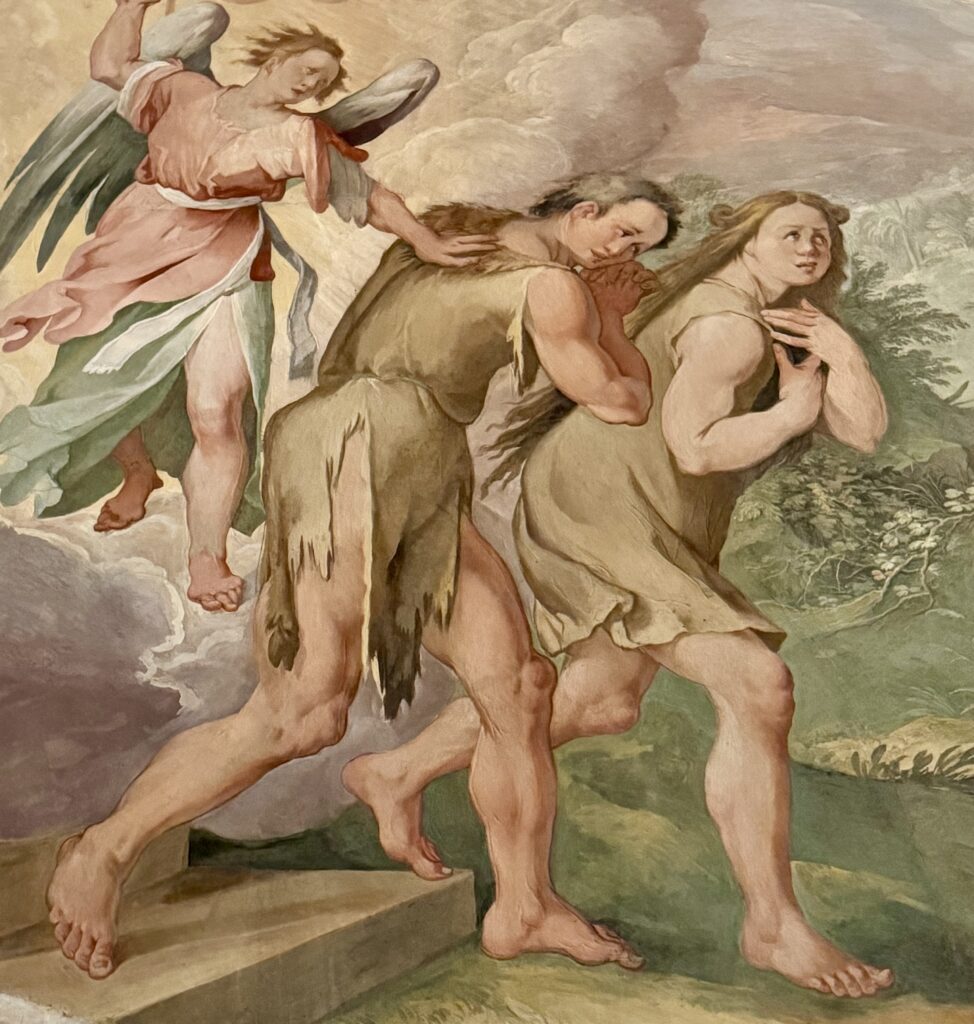
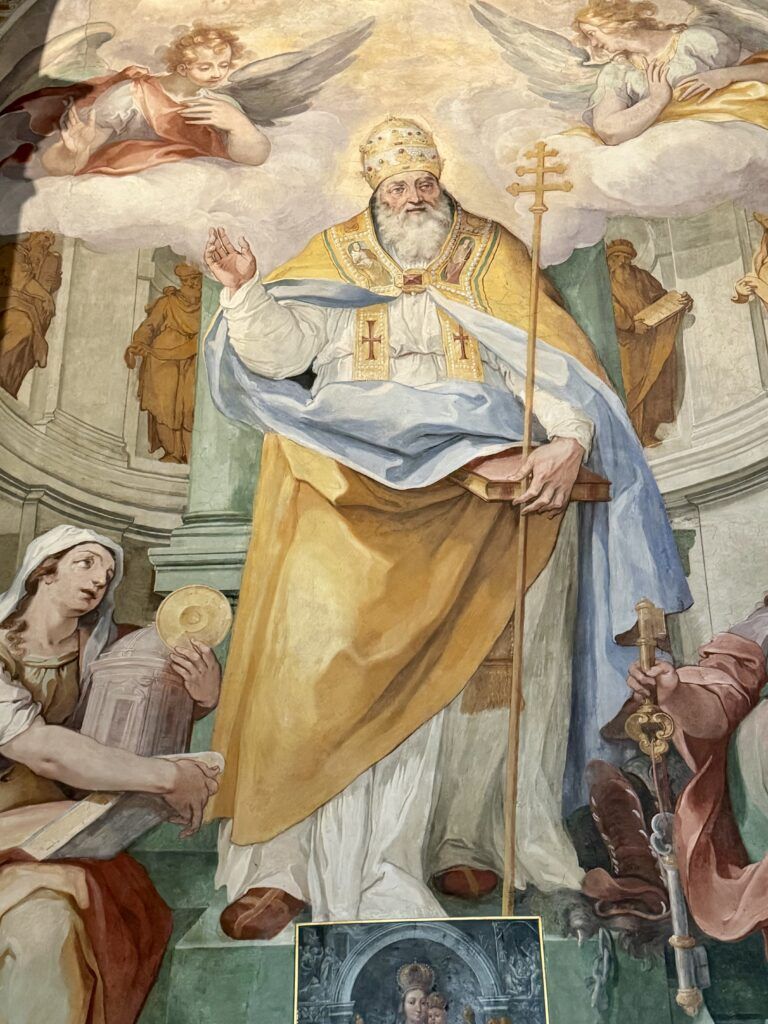
Did Jesus Really Climb The Holy Stairs?
It’s leap of faith based on legend to climb the Holy Stairs. But are they the real thing, the same staircase that was allegedly in Jerusalem 2,000 years ago?
No one knows for sure. There has been no scientific study.
Some archaeologists and historians don’t believe the stairs are from Pontius Pilate’s palace. Marble wasn’t a material commonly found in Jerusalem. It wasn’t a material used in construction before the second century.
The palace may not even have been located where legend holds the event took place. It’s possible the stairs were an attempt at a replica.
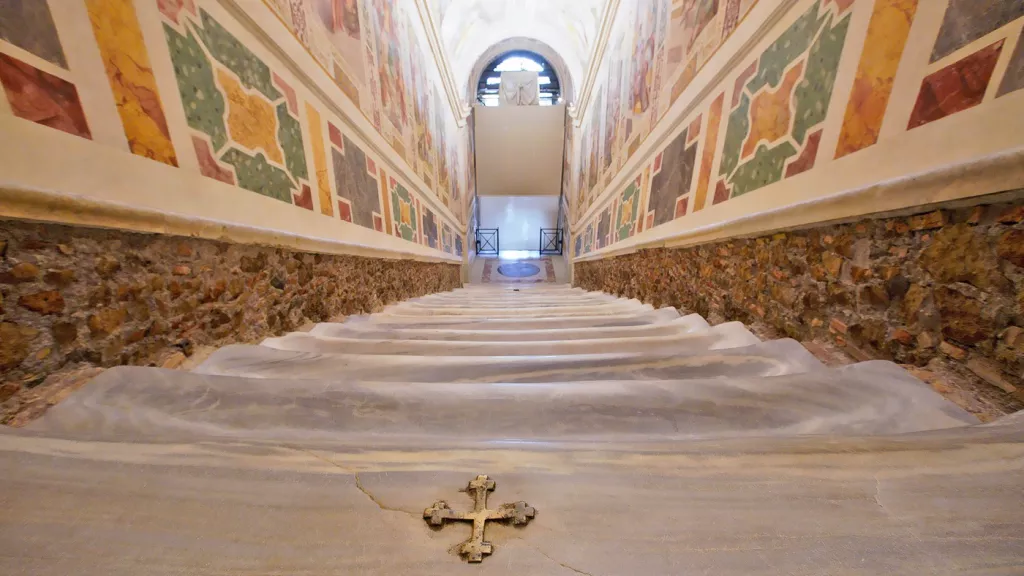
Guide To The Holy Stairs & Sancta Sanctorum
Holy Stairs
Constantine and his mother had a profound impact on the western world. Now, any visitor to Rome can experience the legacy they left behind and get up close and personal with one of the most influential figures in history, Jesus.
The Holy Stairs are near the Basilica of St. John Lateran. It’s the seat of the Bishop of Rome, commonly called the pope.
Anyone can visit the site, of any faith or creed. You just have to respect tradition.
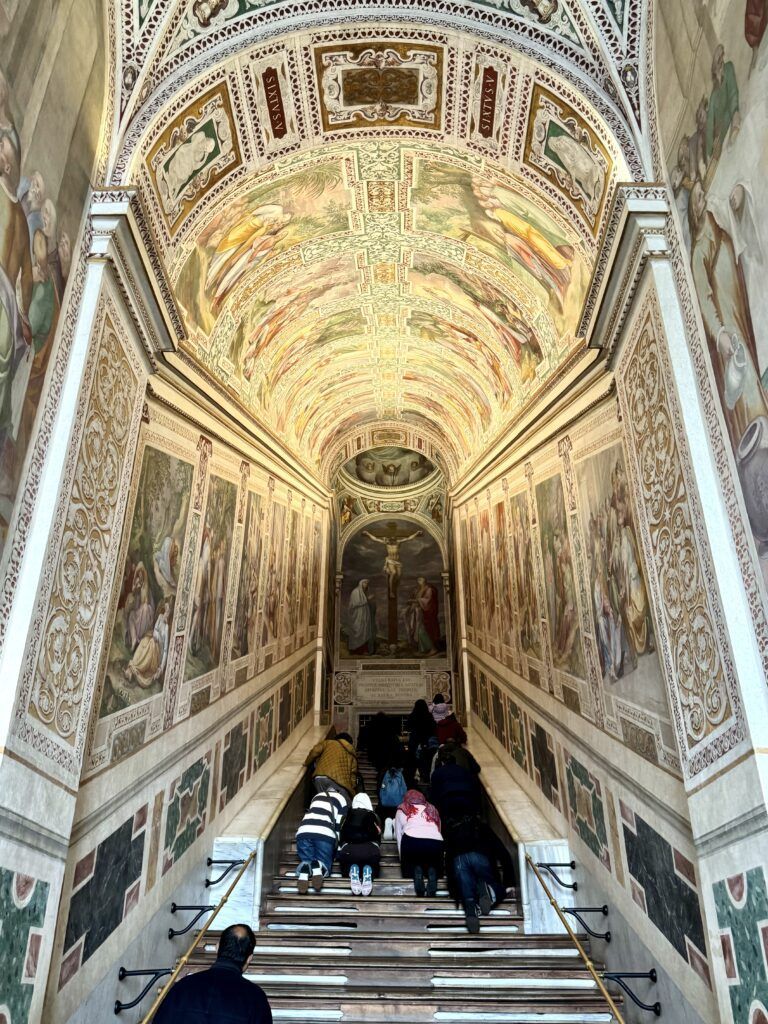
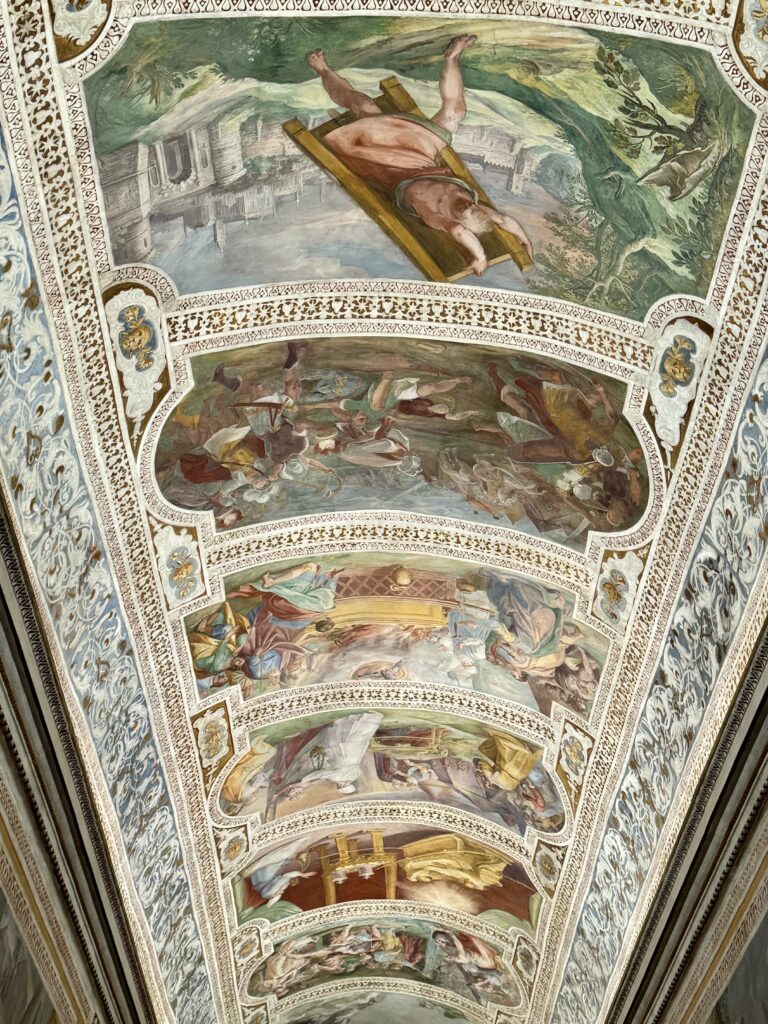
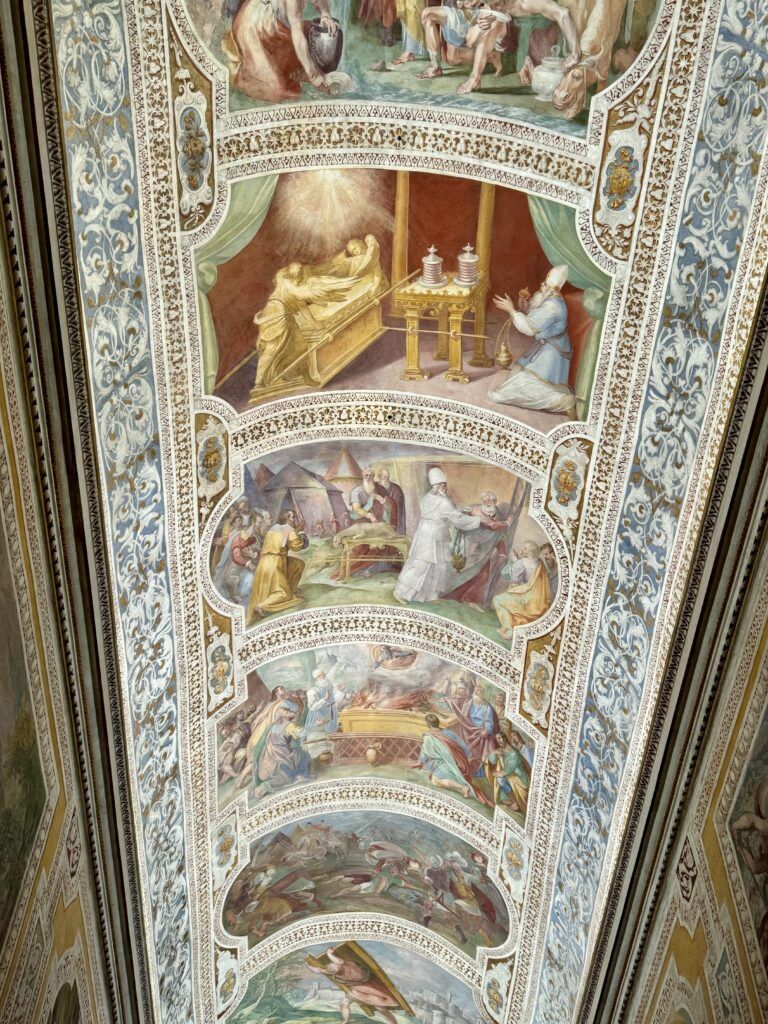
At the base of the Holy Stairs, there are two imposing statues linked to Christ’s Passion. One is an image of Jesus with Pontius Pilate and the other depicts the Kiss of Judas.
The Holy Stairs draw half a million visitors a year. Pilgrims climb the 28 steps on their knees.
It’s considered an act of devotion and penance, in which they meditate on the passion of Christ. The climb is performed with silence and focus, as climbers’ knees find the well worn grooves.
Many people will also stop and kiss points on the steps where three medieval crosses mark drops of Christ’s blood.
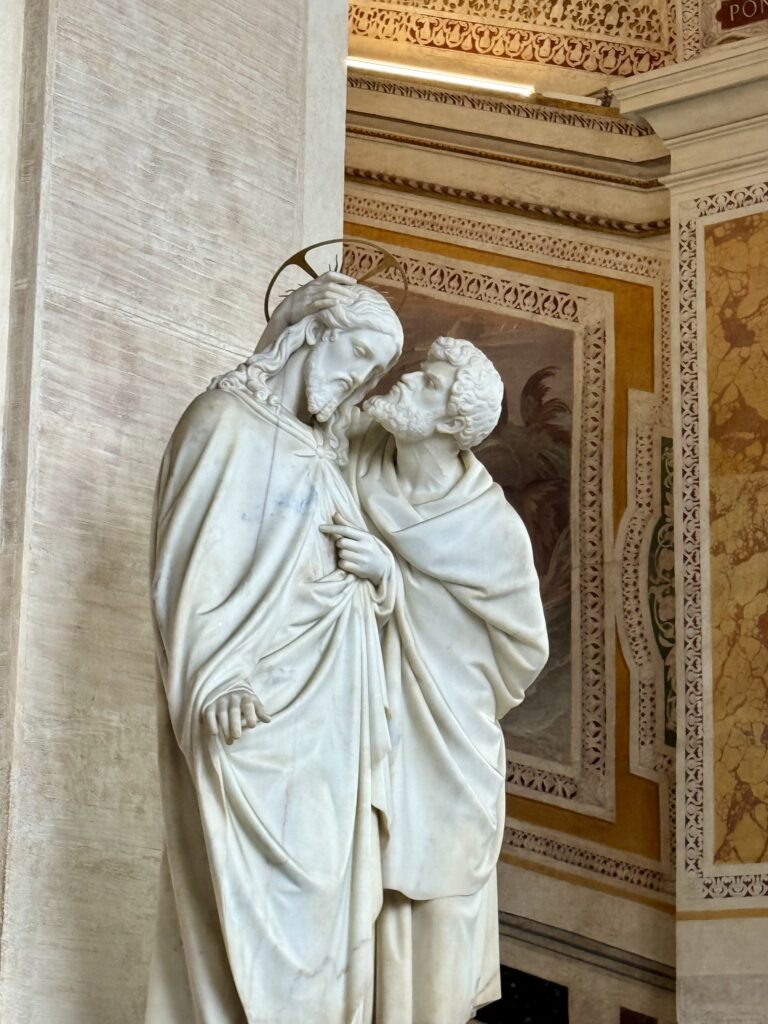
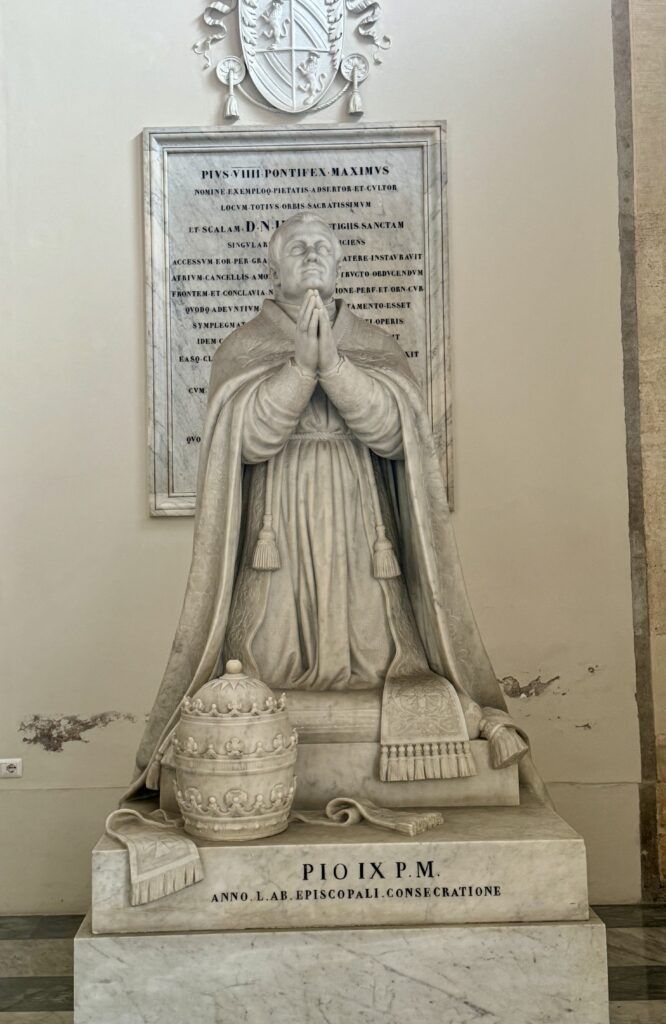
I didn’t do the climb myself (I’m not religious). But it was a moving experience to watch witnesses affirm their faith.
For those like me, the Holy Stairs are flanked by “common” staircases that you can take to reach the top of the landing.
Each staircase is enveloped in frescoes from the late 16th century.
They tell stories from the old and new testaments and depict various saints. There are some superb landscapes by Flemish master Paul Bril.
Sancta Sanctorum
The Sancta Sanctorum is at the top of the Scala Sancta. It originally served as the private chapel of the popes. The last pope to visit was Pius IX.
In the Middle Ages, it was nicknamed the “Holy of Holies.” It was the most sacred place on earth and an important pilgrimage site.
You can peak at the sancta through grated windows. But I think it’s worth coughing up 3.50 euros to go inside.
The chapel is also renowned for its beautiful and rare medieval frescoes in a Byzantine style from 1280. They show scenes from the life of Christ.
There are portraits of apostles and saints on the upper walls, framed between serpentine Gothic columns. On the ceiling are the symbols of the four evangelists.
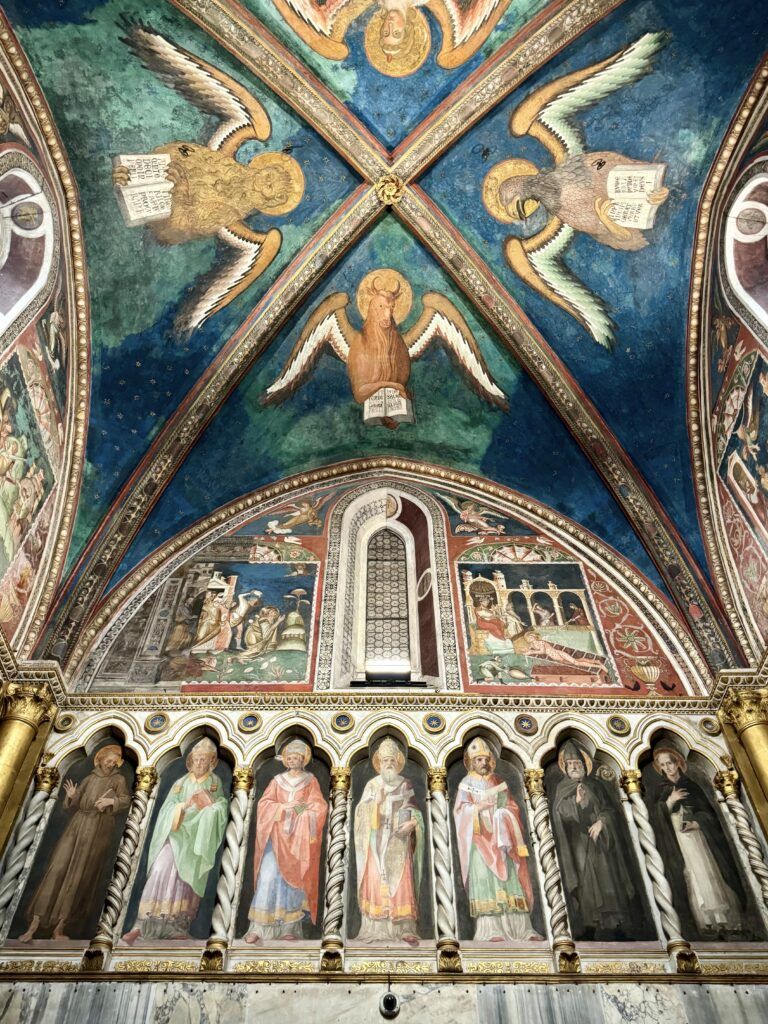
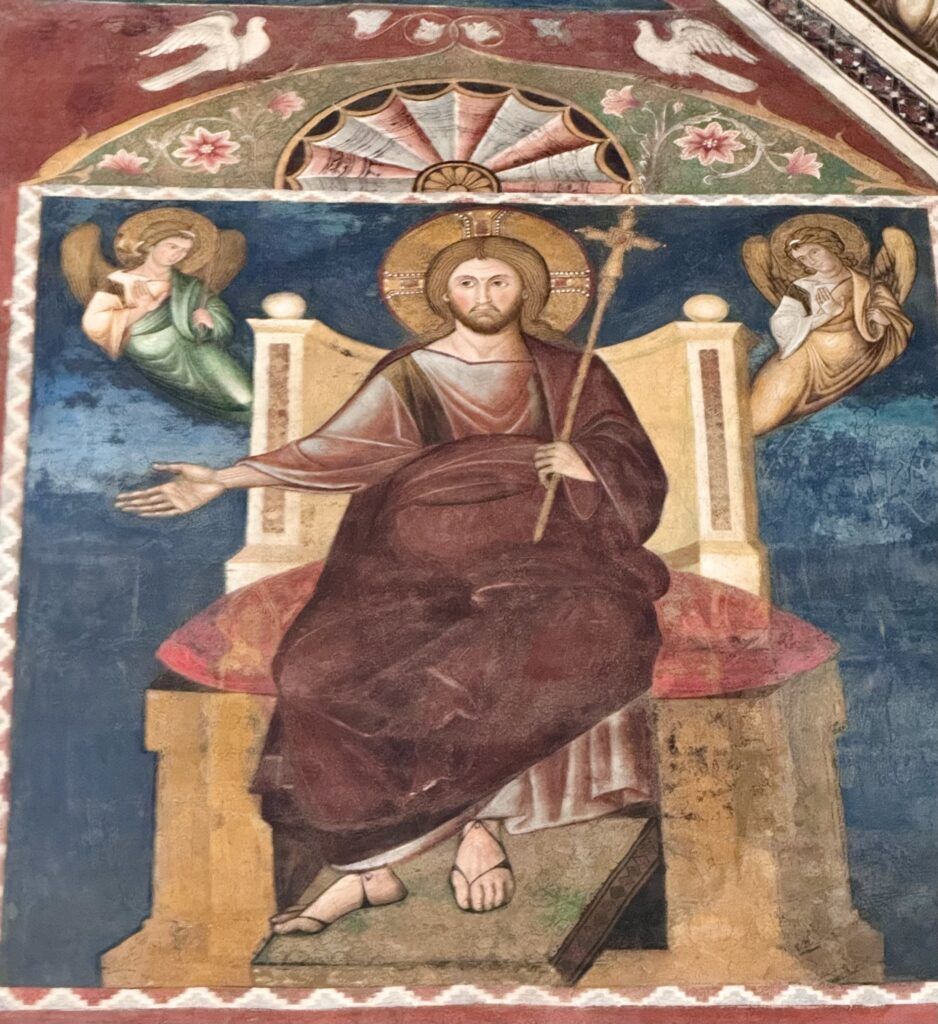
There’s icon of Christ, known as the Acheropita, meaning not made by human hands. This 5th century image was highly venerated and considered miraculous.
The icon sits atop a wooden reliquary box that holds the relics of 13 saints. You can see faint traces of Chris started on a throne, surrounded by an aura in the form of a cross.
It’s thought to have come into existence miraculously. Legend holds that it was begun by Saint Luke the Evangelist, but finished by an angel.
Tips For Visiting The Holy Stairs & Sancta Samctorum
Address: Piazza di S. Giovani in Laterano 14
The Holy Stairs are located in the part of Rome called the Lantern. It’s on the southeast side of the city.
It’s a 10 minute walk from the San Giovani Metro Station (Line A) or a 20 minute walk from the Colosseum.
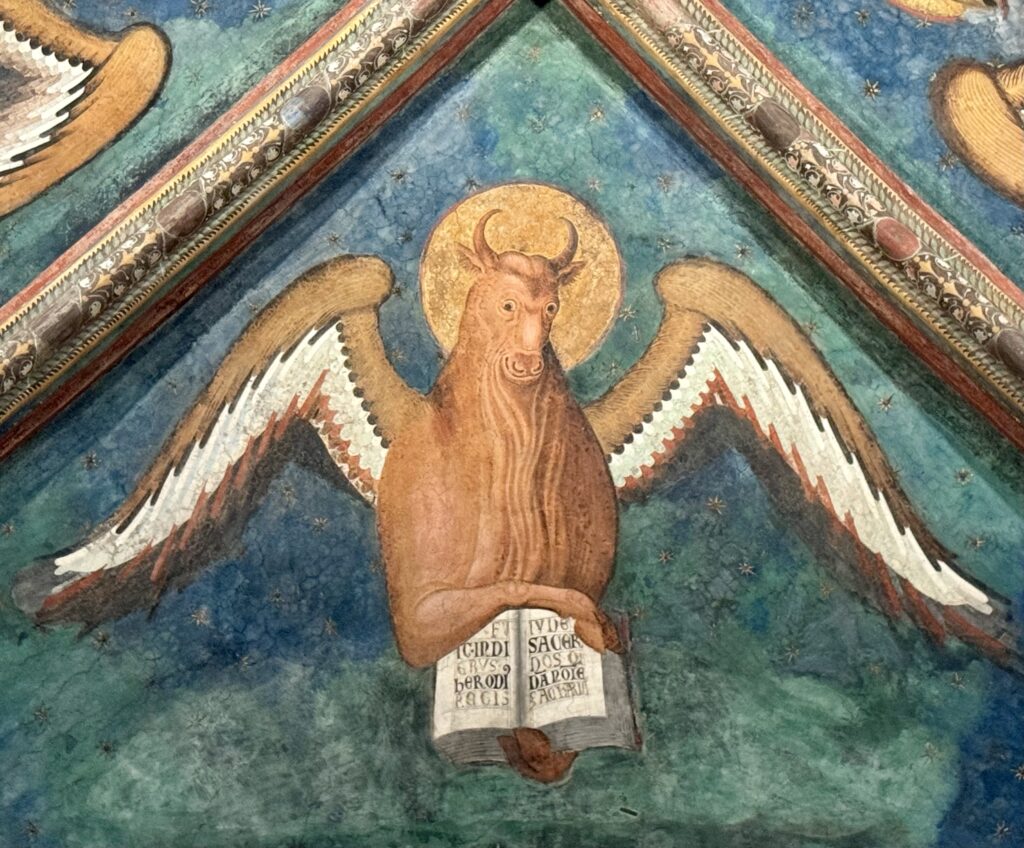
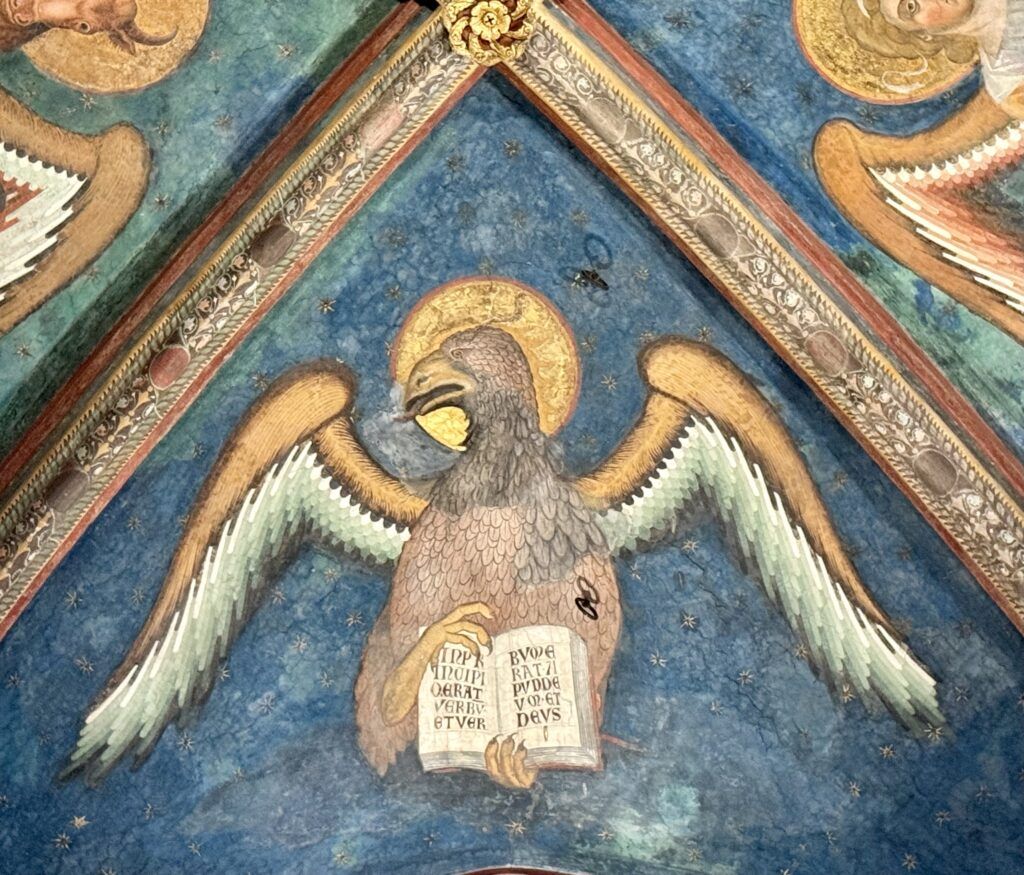
Hours:
The Holy Stairs are open daily from 6:30 am to 6:30 pm. On Sunday, the opening time is 7:00 am. In the summer, closing time is 7:00 pm. It’s occasionally closed for periods in mid-day.
The Sancta Sanctorum is open from 9:00 am to 1:00 am & 3:00 pm to 5:00 pm.
Tickets:
The holy stairs are free to visit, no reservation needed. But the entrance to the Sancta Sanctorum is 3.50 euros or 6 euros with an audio guide. You can buy a ticket at the entrance or at the bookstore upstairs.
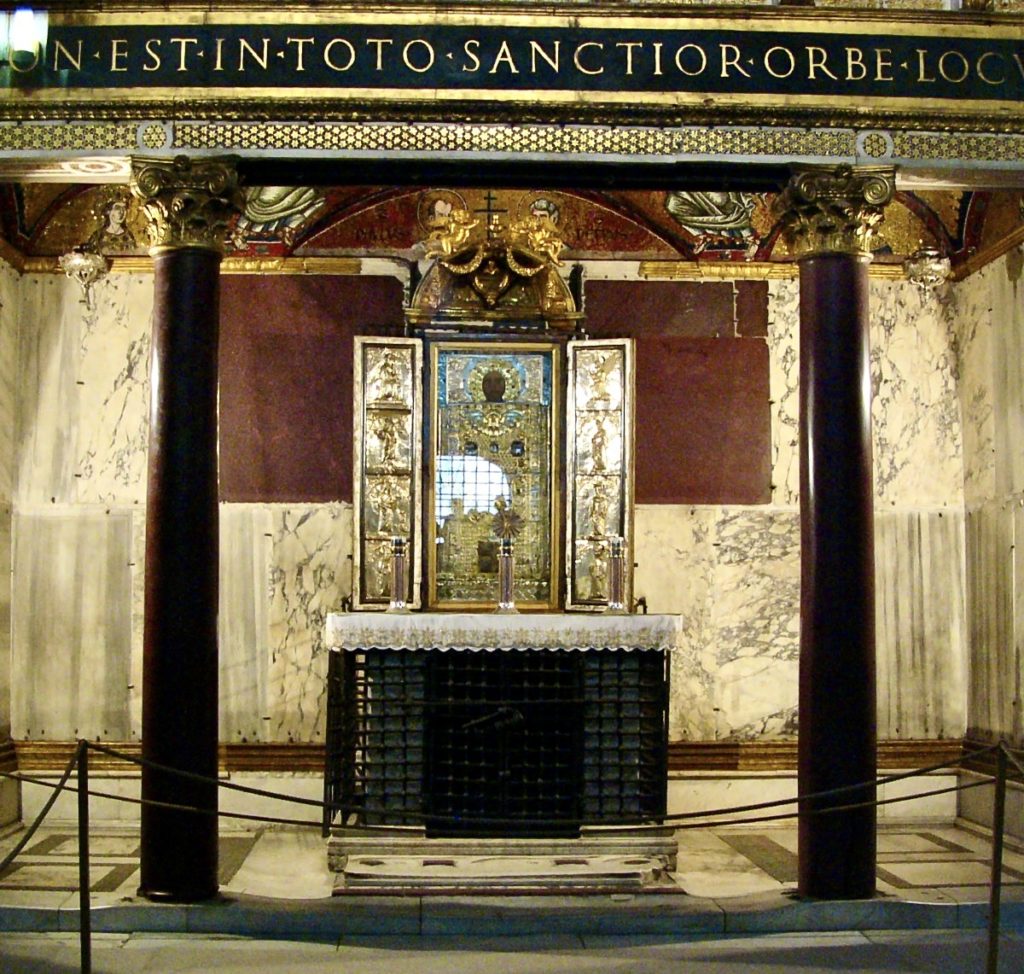
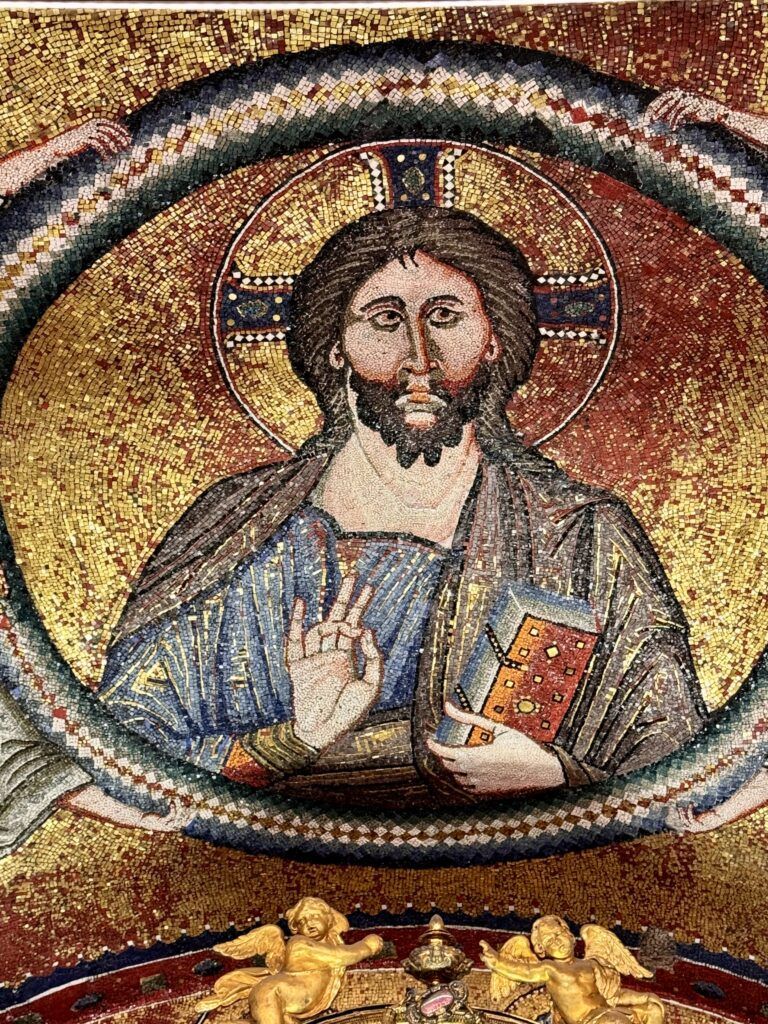
Guided Tours:
You can book a 2 hour guided tour to see both the Basilica of St. John Lateran and the Holy Stairs. This 3 hour guided tour takes you to four churches in Rome and the Holy Stairs.
Pro Tips: When you are done at this site, visit the Basilica of St. John Lateran just across the square.
Website
I hope you’ve enjoyed my guide to visiting the Holy Stairs and the Sancta Sanctorum. You may enjoy these other Rome travel guides and resources:
- 8 ways to spend 1 day in Rome
- 3 day itinerary for Rome
- 5 day itinerary for Rome
- Hidden gems in Rome
- Best museums in Rome
- Archaeological sites in Rome
- Guide to the Borghese Gallery
- Guide to Palatine Hill
- Guide to the Roman Forum
- Guide to the Colosseum
- Walking tour of central Rome
If you need a guide to the Holy Stairs, pin it for later.

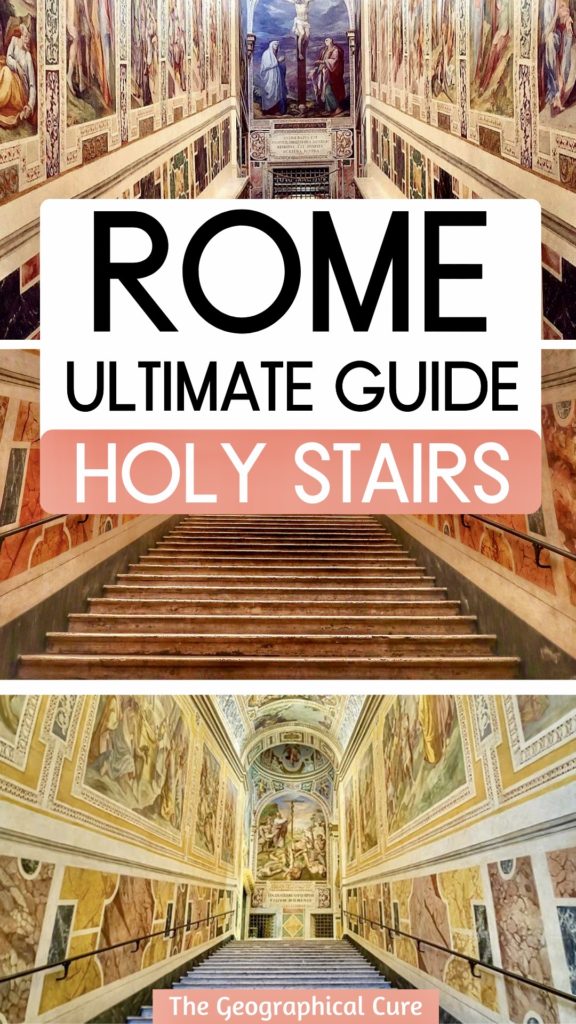
On my next visit to Rome, I will do the holy stairs
Yes! Do it!
On my visit there several weeks after 9/11 the first thing I left the hotel to see was the holy stairs. My sister told me where they were. The taxi driver knew exactly. After reading the history of it, I went a few steps to the base of the holy stairs. I couldn’t go up as I have arthritis in both knees but I was so engrossed, mesmerized (call it what you like) that I didn’t notice the Frescos or statues at all. This article is where I just got my 1st look at them. Go, it is most definitly well worth the trip!